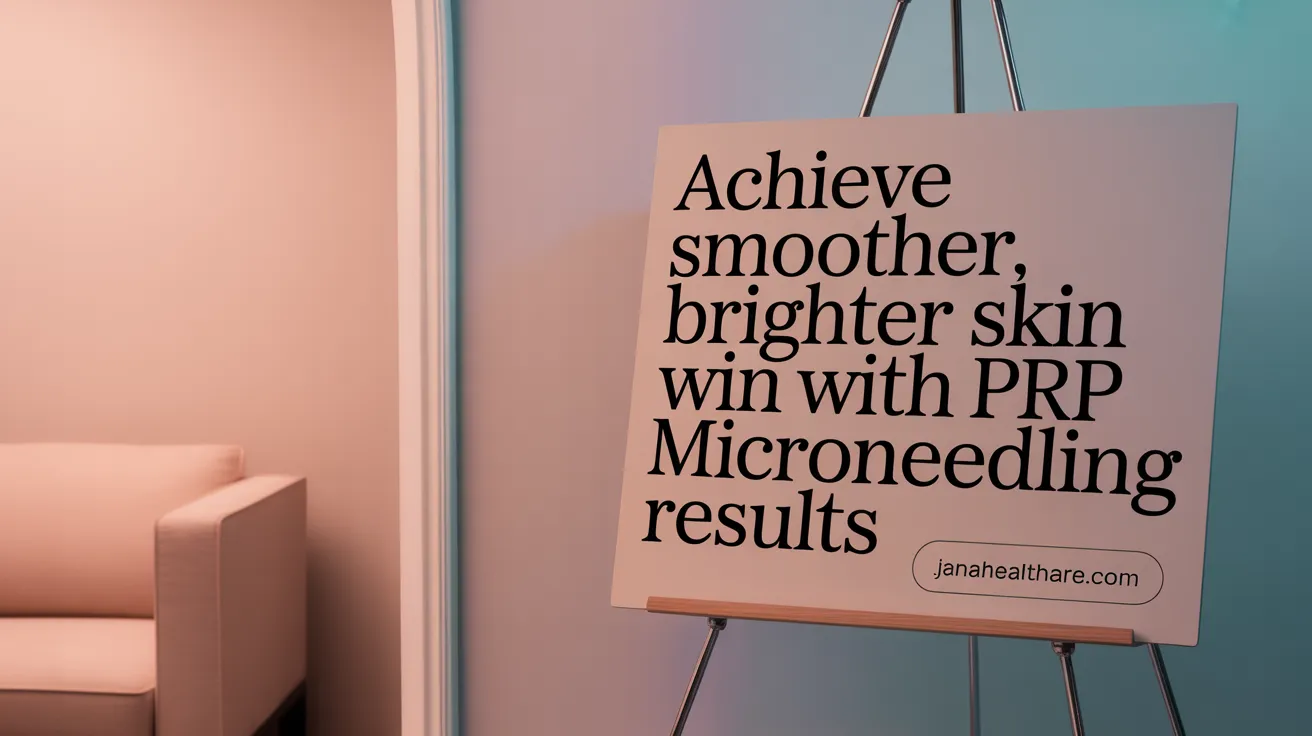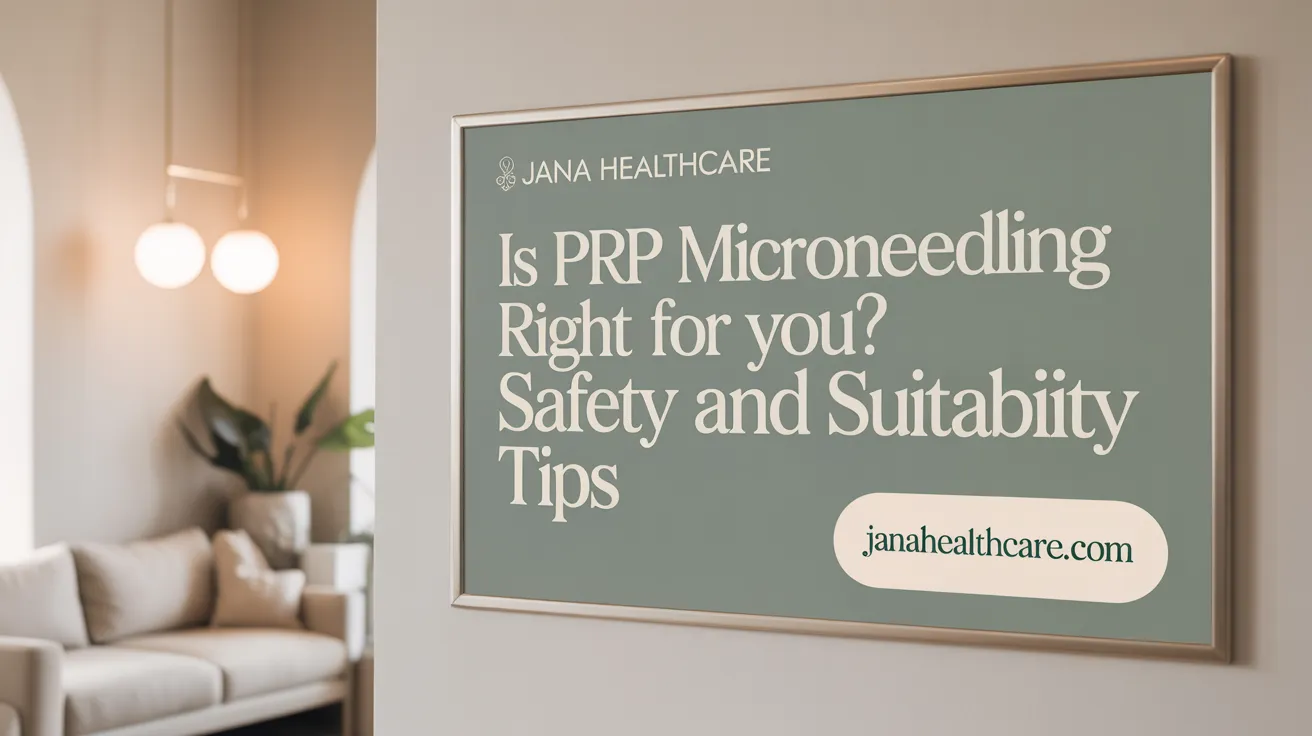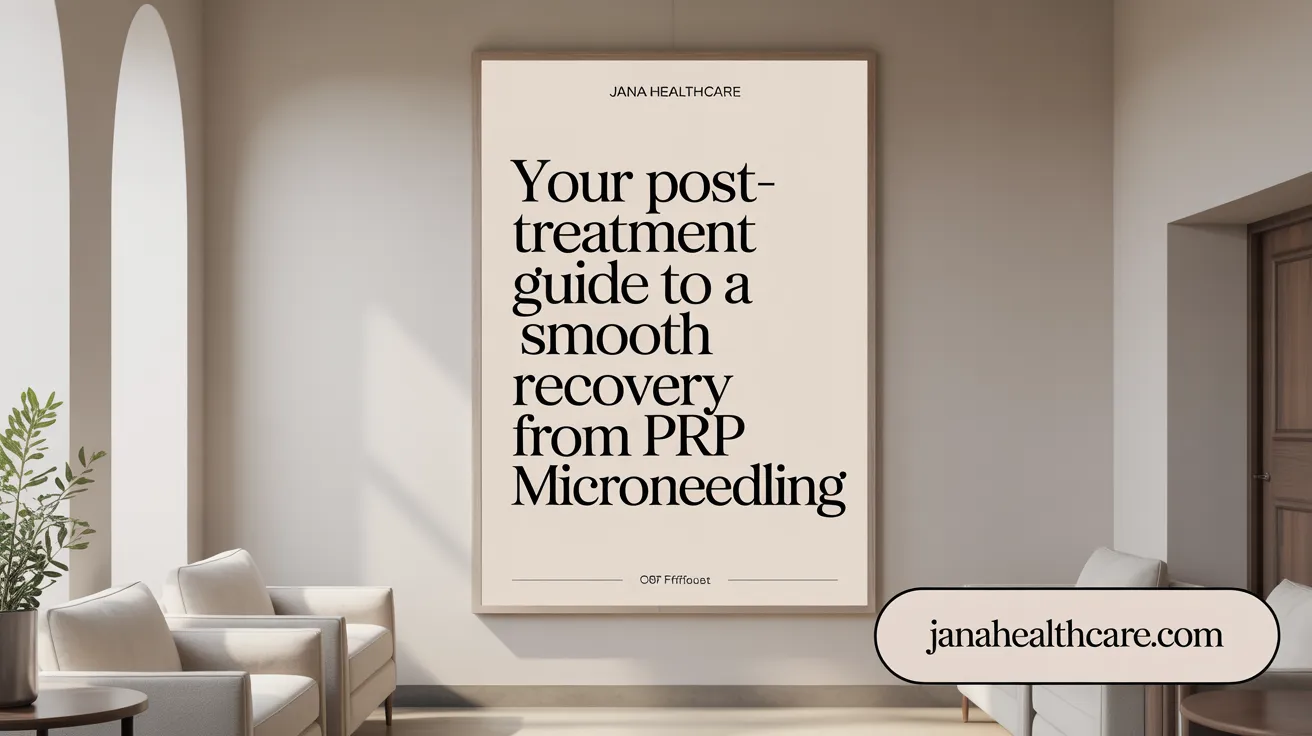Introduction to PRP Microneedling
Microneedling combined with Platelet-Rich Plasma (PRP) therapy, popularly known as the 'vampire facial,' has garnered significant attention for its promise to rejuvenate skin by stimulating collagen production and enhancing healing. This minimally invasive cosmetic procedure involves creating controlled micro-injuries in the skin, followed by the application of a concentrated plasma derived from the patient’s own blood, packed with growth factors that promote tissue regeneration. As its popularity grows, understanding the science behind PRP microneedling, its realistic benefits, potential side effects, recovery process, and overall effectiveness is essential for those considering this treatment.
The Science and Procedure Behind Microneedling with PRP

What is microneedling and how does it work?
Microneedling, also known as collagen induction therapy, is a minimally invasive cosmetic procedure that uses tiny sterilized needles to create controlled micro-injuries on the skin's surface. These micro-injuries trigger the body's natural healing process, stimulating the production of collagen and elastin — crucial proteins for maintaining skin firmness and elasticity. This collagen induction helps to improve skin texture, reduce wrinkles, scars, and signs of aging.
What is PRP and how is it prepared?
Platelet-Rich Plasma (PRP) is a concentrated plasma derived from the patient's own blood. It contains a high concentration of platelets and growth factors, which are essential for tissue repair and regeneration. To prepare PRP, a small amount of blood is drawn and then processed in a centrifuge which separates and concentrates the platelets within the plasma. This PRP is rich in proteins and growth factors that help stimulate collagen synthesis and accelerate healing (PRP preparation process).
How is PRP used with microneedling?
In microneedling with PRP, the skin is first cleaned and numbed with a topical anesthetic. The microneedling device creates microchannels by puncturing the skin, which allows for deeper penetration of the PRP when it is applied topically or injected. This combination enhances the skin’s healing response, accelerating collagen and elastin production more effectively than microneedling alone. The PRP floods these tiny wounds with regenerative growth factors, promoting faster tissue regeneration, reducing redness and swelling, and improving overall skin rejuvenation.
Procedure steps
The treatment typically starts with cleansing the skin and applying a numbing cream. A small blood sample is drawn from the patient and spun in a centrifuge to isolate the PRP (PRP preparation and application). Using an automated device, the microneedling is performed by creating tiny punctures across the skin (Microneedling procedure steps). Immediately afterward, the PRP is applied to the treated areas, allowing it to seep into the microchannels created during needling. Some practitioners also combine this with LED light therapy to further support healing. The entire process usually takes about 30 to 45 minutes, with minimal downtime after the session (Microneedling recovery process).
Combining microneedling with PRP leverages the body’s natural healing powers, producing visible improvements in skin texture, tone, and firmness more quickly and with enhanced results compared to microneedling alone (Microneedling with PRP benefits).
Expected Benefits and Realistic Results from PRP Microneedling

What skin issues does PRP microneedling address?
PRP microneedling is a versatile treatment that targets a variety of skin concerns. It effectively improves fine lines, wrinkles, and acne scars by stimulating collagen and elastin production. Additionally, it helps reduce hyperpigmentation, sun damage, large pores, uneven skin texture, and stretch marks, leading to brighter, smoother, and more youthful-looking skin. For a comprehensive overview, see Benefits of PRP microneedling.
How soon can results be seen and how long do they last?
Results from PRP microneedling typically start to become visible within 2 to 3 weeks after the procedure. More noticeable improvements in skin texture, tone, and scar reduction usually present around 4 to 6 weeks. These enhancements can last for several months, but maintaining the benefits often requires follow-up treatments every 6 to 12 months, depending on individual skin conditions and lifestyle. For more detail on timelines and treatment schedules, refer to Microneedling with PRP results timeline and How many sessions of microneedling with PRP do you need.
How many sessions are generally required?
Optimal results from PRP microneedling are commonly achieved with a series of 3 to 6 sessions. These treatments are spaced about 4 to 6 weeks apart to allow the skin sufficient time to regenerate between sessions. For more severe skin issues like deep scars or pronounced wrinkles, a higher number of sessions may be recommended to maximize skin rejuvenation. For guidance on recommended sessions and treatment frequency, see Microneedling with PRP session recommendations and Recommended microneedling sessions.
Overall, PRP microneedling offers gradual yet lasting improvements in skin health and appearance, with the potential for long-term skin rejuvenation when combined with proper aftercare and maintenance.
Safety, Side Effects, and Patient Suitability

What are common side effects of PRP microneedling?
Typical side effects of microneedling with PRP include mild redness, swelling, bruising, and tenderness. Patients often experience mild peeling and sensations similar to a mild sunburn. These effects are usually temporary and resolve within 3 to 6 days. Mild pinpoint bleeding and skin sensitivity may also occur immediately after treatment but generally subside quickly. For more information on microneedling side effects and post-treatment care for PRP microneedling, see these resources.
What serious risks should patients be aware of?
Although rare, serious risks can include infection, scarring, and allergic reactions. Individuals with a history of cold sores may experience outbreaks triggered by the treatment. These risks are mainly associated with improper technique, poor sterilization practices, or treatment by unqualified practitioners. Ensuring the procedure is done in a sterile medical environment by trained professionals minimizes these risks. For further details on complications of platelet-rich plasma and microneedling and PRP therapy safety, consult the linked materials.
Who should avoid PRP microneedling?
PRP microneedling is not recommended for pregnant or breastfeeding women. Patients with active skin infections such as eczema, psoriasis, or acne, blood clotting disorders, or those currently using or having recently used medications like Accutane should avoid treatment. Additionally, individuals with poor wound healing ability or those who have had recent skin radiation therapy are unsuitable candidates due to increased risk of complications. You can learn more about who should avoid microneedling with PRP and candidate suitability for PRP microneedling.
Suitability criteria
Most patients without the above contraindications are good candidates for PRP microneedling. The procedure is considered safe across all skin types and colors, with minimal downtime. A medical consultation prior to treatment ensures tailored care that accounts for individual health and skin conditions, promoting safe and effective results. Explore more about ideal candidates for microneedling with PRP and safety of microneedling with PRP.
The Recovery Journey: What to Expect After Treatment

What happens to the skin immediately after PRP microneedling?
Post-treatment, your skin often feels sensitive, warm, and tight, similar to a mild sunburn. You may notice redness, pinpoint bleeding, and swelling that usually last 24 to 72 hours. These reactions are normal signs that the skin is beginning its healing and collagen production process. For more details on immediate effects and aftercare, see PRP microneedling benefits and post-treatment care.
What is the typical timeline for skin recovery?
The recovery generally follows a predictable course. Redness and swelling are most noticeable during the first two days. Around days 3 to 5, the skin might become dry and start to peel as the surface renews. By about one week after the treatment, you can begin to see brighter, smoother skin as new collagen takes effect and the healing process advances. For an in-depth overview of the recovery timeline, see Microneedling recovery process.
What post-care steps are recommended?
Proper care supports healing and maximizes treatment benefits. Avoid washing your face for the first 4 to 6 hours post-procedure. Refrain from makeup for 2 to 3 days to prevent irritation. Sun exposure and vigorous exercise should be minimized for several days to reduce inflammation and risk of pigmentation. Use gentle cleansers and nourishing moisturizers, and starting 24 to 48 hours after treatment, apply mineral-based sunscreens containing zinc oxide or titanium dioxide to protect your healing skin. For detailed post-care guidance, refer to Post-treatment care for PRP microneedling.
When can normal activities be resumed?
Fortunately, the downtime for PRP microneedling is minimal. Most patients can return to their usual daily routines as soon as the next day. However, it is advised to take precautions for a few days by avoiding harsh skincare products, heavy sweating, and hot showers to promote optimal recovery. For more details on recovery and when to resume normal activities, see Microneedling recovery guidelines.
Following these steps ensures a smooth recovery journey and helps you enjoy the gradual, natural improvements in your skin's appearance over the weeks following treatment. For comprehensive information on microneedling with PRP and its benefits, visit Microneedling with PRP overview.
Comparing PRP Microneedling to Traditional Microneedling
How does PRP microneedling differ from traditional microneedling?
PRP microneedling enhances the traditional procedure by incorporating platelet-rich plasma (PRP), derived from the patient's own blood. This plasma is rich in growth factors that accelerate healing and stimulate collagen production more intensely than microneedling alone. The addition of PRP may also help reduce redness, swelling, and downtime after treatment, potentially leading to faster and more noticeable skin rejuvenation. This combination is often known as the "vampire facial", because of the use of blood-derived plasma. For more details, see Microneedling with PRP and PRP in microneedling.
Is PRP microneedling more expensive?
Yes, PRP microneedling usually comes with higher costs compared to traditional microneedling. The average price per session is around $750, with the overall expense for a complete set of 3 to 6 sessions ranging between $2,250 and $4,500. Traditional microneedling treatments tend to be less expensive, making the PRP-enhanced procedure a premium option for skin care. For further cost information, see Microneedling with PRP cost and Treatment costs and sessions.
Is there conclusive evidence that PRP improves microneedling outcomes?
Research indicates that adding PRP to microneedling may improve treatment results, especially for acne scars. Some studies show an approximately 62% improvement with PRP compared to lower improvement rates with microneedling alone. However, despite promising data, the overall evidence remains inconclusive, and further studies are needed to fully validate these benefits and establish consistent clinical protocols. Patients should consult skin care professionals to determine the best treatment for their concerns. For clinical insights, see Scientific study on PRP and microneedling and Microneedling with PRP effectiveness.
Expert Recommendations and Future Research Directions
Who should perform PRP microneedling procedures?
PRP microneedling should always be conducted by trained medical professionals, such as board-certified dermatologists or licensed nurses. These experts ensure sterile handling of blood products, proper technique, which significantly reduces the risk of infection or adverse effects. Given that the procedure involves blood processing and skin puncturing, professional administration is critical for safety and optimal outcomes.
How important is patient selection?
Patient screening is essential prior to PRP microneedling. Those with active skin conditions like eczema, rosacea, or infections, as well as individuals with blood clotting disorders or recent use of medications like Accutane, may not be suitable candidates. Identifying contraindications helps prevent complications such as poor healing, infections, or hyperpigmentation. Proper medical assessment ensures that treatment benefits outweigh risks. See Microneedling candidate criteria and Who can have PRP microneedling.
What does current research indicate about PRP microneedling?
Research to date presents promising but mixed results regarding the efficacy of PRP combined with microneedling. While many studies demonstrate enhanced collagen production, improved skin texture, and scar reduction, some clinical trials found no significant advantage over microneedling alone. Most agree on the treatment's safety profile but highlight the necessity for larger, long-term studies to validate efficacy and refine treatment protocols.
Is maintenance treatment necessary?
Maintenance sessions are typically advised to prolong the improvements achieved by PRP microneedling. Depending on individual skin concerns and results, clinicians often recommend follow-up treatments every 6 to 12 months. Ongoing care helps sustain collagen stimulation and skin rejuvenation, ensuring lasting effects on texture, tone, and scar appearance. More information on microneedling treatment schedule and how many sessions of microneedling with PRP do you need.
Professional guidance, comprehensive patient evaluation, and adherence to recommended treatment schedules contribute to the safe and effective use of PRP microneedling as an evolving dermatologic therapy. For post-treatment care and recovery, and more about microneedling side effects, please refer to the linked guidelines.
Is PRP Microneedling a Miracle or Myth?
Microneedling combined with Platelet-Rich Plasma offers a scientifically grounded and promising approach to skin rejuvenation by leveraging the body's natural healing mechanisms enhanced with growth factors from one's own blood. While many patients experience improvements in skin texture, scars, fine lines, and pigmentation with minimal downtime, the procedure is not without limitations. Side effects are generally mild, but patient suitability and post-treatment care are key to safe, effective outcomes. Although clinical research supports its benefits, conclusive evidence verifying the superiority of PRP microneedling over standard microneedling remains limited, indicating the need for further studies. Ultimately, PRP microneedling represents a valuable option within the cosmetic treatment spectrum, especially when administered by qualified professionals and coupled with appropriate maintenance. Whether it is a 'miracle' depends largely on individual expectations and clinical contexts, but it certainly is more than just a myth.
